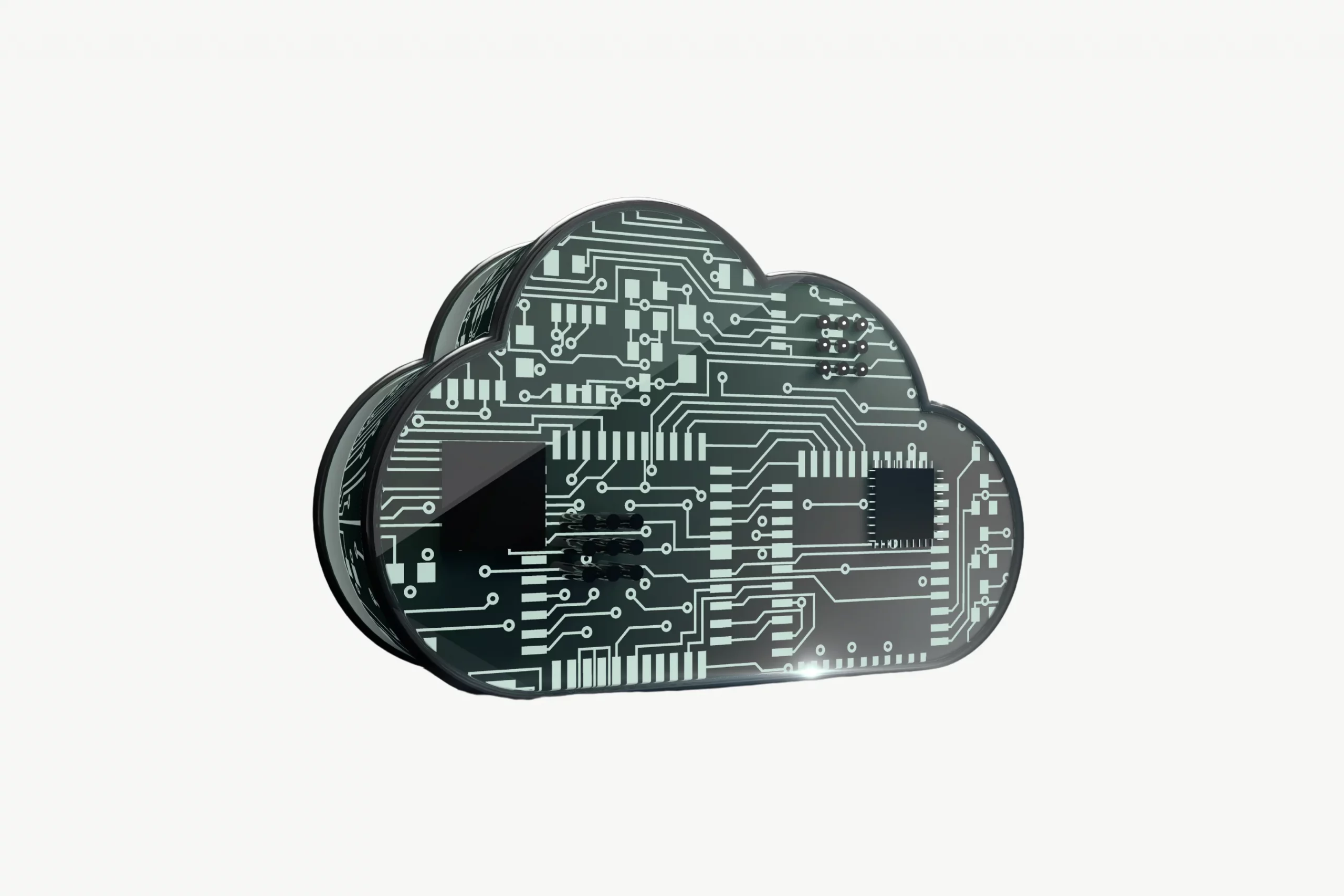The New Era of AI in 2025: From Gemini 3 to Creative AIs
Learn about the best AI tools for 2025, including Nano...
We use cookies for our website to give you the most relevant experience by remembering your preferences. By clicking “accept”, you consent to use of ALL the cookies
This website uses cookies to improve your experience while you navigate through the website. Out of these, the cookies that are categorized as necessary are stored on your browser as they are essential for the working of basic functionalities of the website. We also use third-party cookies that help us analyze and understand how you use this website. These cookies will be stored in your browser only with your consent. You also have the option to opt-out of these cookies. But opting out of some of these cookies may affect your browsing experience.
Necessary cookies are absolutely essential for the website to function properly. These cookies ensure basic functionalities and security features of the website, anonymously.
| Cookie | Duration | Description |
|---|---|---|
| cookielawinfo-checkbox-functional | 11 months | This cookie is set by GDPR Cookie Consent plugin. The cookie is used to store the user consent for the cookies in the category “Analytics”. |
| cookielawinfo-checkbox-functional | 11 months | The cookie is set by GDPR cookie consent to record the user consent for the cookies in the category “Functional”. |
| cookielawinfo-checkbox-necessary | 11 months | This cookie is set by GDPR Cookie Consent plugin. The cookies is used to store the user consent for the cookies in the category “Necessary”. |
| cookielawinfo-checkbox-others | 11 months | This cookie is set by GDPR Cookie Consent plugin. The cookie is used to store the user consent for the cookies in the category “Other. |
| cookielawinfo-checkbox-performance | 11 months | This cookie is set by GDPR Cookie Consent plugin. The cookie is used to store the user consent for the cookies in the category “Performance”. |
| viewed_cookie_policy | 11 months | The cookie is set by the GDPR Cookie Consent plugin and is used to store whether or not user has consented to the use of cookies. It does not store any personal data. |
Functional cookies help to perform certain functionalities like sharing the content of the website on social media platforms, collect feedbacks, and other third-party features.
Performance cookies are used to understand and analyze the key performance indexes of the website which helps in delivering a better user experience for the visitors.
Analytical cookies are used to understand how visitors interact with the website. These cookies help provide information on metrics the number of visitors, bounce rate, traffic source, etc.
Advertisement cookies are used to provide visitors with relevant ads and marketing campaigns. These cookies track visitors across websites and collect information to provide customized ads.
Other uncategorized cookies are those that are being analyzed and have not been classified into a category as yet.
Cyberia Tech, Inc. respects your privacy. This Privacy Policy explains how we collect, use, and share your information. By using our services, you agree to this policy. If any other agreements conflict with this Privacy Policy, the terms of those agreements prevail.
Cyberia Tech complies with the EU-US and Swiss-US Privacy Shield Frameworks for handling personal data from the EEA, UK, and Switzerland. In case of any conflict, the Privacy Shield Principles prevail. Learn more at Privacy Shield. Key Definitions
Information linked to an individual, transferred from the EEA, UK, or Switzerland to the U.S.
Data revealing race, religion, health, sexual orientation, and similar categories.
Effective Date: [ 2025 / 12 / 12 ]
Welcome to The Cyberia Tech ! By accessing or using our website or services, you agree to
comply with and be bound by these Terms of Use and our Privacy Policy. If you do not agree with
these terms, please do not use our Services.
Loading
0 %

In Part 1 of our journey through the future of mobile app development, we explored some of the game-changing technologies already reshaping the landscape—AI, 5G, AR/VR, blockchain, and IoT. These innovations are setting the stage for a new era of app experiences. But we’re just getting started. In Part 2, we’re diving into even more advanced trends that will drive the evolution of mobile apps beyond 2025.
One of the most exciting developments we’ll cover is the rise of super apps. You might be asking yourself, What is a super app? At its core, a super app is an all-in-one platform that brings together a wide range of services—everything from messaging and payments to shopping and entertainment—into one seamless ecosystem. These apps are changing how users engage with their digital world, and they’re poised to become even more integrated into our daily lives.
But super apps aren’t the only thing to look out for. We’ll also dive into the growth of decentralized apps (dApps), the role of AI-powered personalization, edge computing, and the next generation of wearable tech. If you’re curious about these cutting-edge trends and how they’ll shape the future of mobile app development, you’re in the right place. Let’s explore what’s coming next in the world of mobile technology.
Table of Contents

Decentralized apps, commonly known as dApps, are rapidly gaining traction by shifting away from the traditional model of centralized apps. Unlike conventional apps that rely on a single server or company to store and manage data, dApps utilize blockchain technology to distribute data across a vast network of computers. This unique architecture offers several compelling advantages, particularly around security, transparency, and user autonomy.
In a dApp, the data isn’t stored on centralized servers but is instead encrypted and distributed on multiple nodes across the blockchain, ensuring that there is no single point of failure. This not only strengthens security but also enhances the transparency of transactions, as all interactions are visible on the blockchain for verification. One of the core tenets of dApps is giving users greater control over their data, enabling them to engage with apps in a way that minimizes the involvement of intermediaries such as banks, social media platforms, or even tech companies that often control the flow of information.
As the adoption of dApps grows, we’re witnessing an industry-wide shift toward a more user-centric model, where individuals are no longer reliant on corporations to manage their data and digital assets. This development also paves the way for enhanced privacy, as users have more control over what information is shared and with whom.
Identity Verification: With dApps, users control their identity data. This means more secure and privacy-focused interactions online, reducing the risk of breaches.

AI is taking mobile apps beyond simple customization to deliver truly personalized experiences that adapt to users’ behaviors and needs. AI-powered personalization refers to apps using AI to analyze user data and deliver highly tailored content, products, and features in real-time. This ensures that every interaction feels unique and relevant to the user’s preferences.
AI-driven mobile apps offer real-time content recommendations by analyzing user behavior as it happens, suggesting products, services, or content that aligns with immediate interests. This proactive engagement anticipates what users need next, offering tailored suggestions before they even ask, which significantly improves user satisfaction. By delivering relevant, personalized experiences, apps not only enhance user experience but also increase the likelihood of repeat usage, boosting long-term customer loyalty.
Social Media: Social apps will customize user feeds based on AI’s understanding of personal preferences, creating an engaging and dynamic browsing experience.

As mobile apps become more integral to our daily lives, the need for enhanced security and privacy grows stronger. With new threats emerging and user data becoming increasingly valuable, 2025 will see an evolution in how mobile apps safeguard both security and privacy.
Mobile security and privacy refer to the measures taken to protect user data and ensure secure interactions within mobile apps. With the rise of sensitive data, such as health information, financial details, and personal preferences, developers are focusing on robust security solutions to prevent breaches and misuse.
As mobile security and privacy become increasingly critical, several trends are emerging to protect user data. Zero-trust architecture is gaining traction, where no device, user, or app is inherently trusted.
Every interaction is continuously verified, which reduces the risk of unauthorized access. Alongside this, privacy-first app development is shifting the focus to limit the personal data collected, ensuring that apps only request essential information from users.
Finally, end-to-end encryption will play a pivotal role in protecting data, encrypting it both in transit and at rest. This ensures that, even if data is intercepted, it remains unreadable and secure, safeguarding user privacy in an increasingly interconnected world.
Messaging & Social Media Apps: Zero-trust protocols and end-to-end encryption will be implemented to ensure private, secure communications between users.

In recent years, the rise of super apps has marked a significant shift in how users interact with mobile technology. What is a super app? These all-in-one platforms integrate multiple services into a single app, creating a unified digital ecosystem that streamlines everyday tasks and services. Super apps are becoming central hubs for everything from communication to payments, social media, e-commerce, and more.
A super app combines various functionalities into one integrated platform, allowing users to access a wide range of services without needing to switch between apps. Notable examples of successful super apps include WeChat in China, which encompasses messaging, payments, e-commerce, and social media, and Gojek in Southeast Asia, offering services from transportation to food delivery and digital payments.
Super apps are revolutionizing user behavior by creating one-stop platforms for multiple needs, effectively eliminating the need for many separate apps. As users increasingly value convenience and seamless experiences, super apps will become the go-to platforms for most digital interactions.
Users no longer need to download and manage several apps for different tasks, as a single super app will offer access to a multitude of services, from messaging to ordering food or making payments. Additionally, super apps will use artificial intelligence to offer personalized recommendations, enhance user experiences, and automate tasks like scheduling and payment processing.
On-Demand Services: From ride-hailing to food delivery, super apps provide a comprehensive suite of on-demand services, all available within one platform.

As mobile apps become more sophisticated, the need for faster data processing and reduced latency has never been greater. Edge computing and cloud-native mobile apps are emerging as powerful solutions that address these needs by optimizing how and where data is processed. These technologies are key to improving mobile app performance, enabling faster decision-making, and supporting complex, data-heavy applications.
Edge computing involves processing data closer to the source—at the “edge” of the network—rather than relying solely on centralized data centers. This reduces latency, improves speed, and provides real-time insights, which is especially important for applications that require immediate responses, such as gaming, autonomous vehicles, and real-time health monitoring.
Cloud-native mobile apps leverage cloud computing to build scalable, flexible, and cost-efficient apps. By integrating cloud-first strategies such as serverless architectures and microservices, developers can ensure their mobile apps are easier to scale, more reliable, and can handle increasing amounts of traffic and data. Serverless architectures allow developers to focus more on writing code and less on managing servers, enabling faster development and deployment. Microservices, on the other hand, break down an app into smaller, independent components, making it easier to maintain and scale applications over time.

Wearable and embedded technologies are no longer just about fitness tracking—they are transforming how we interact with mobile apps and our surroundings. From health monitoring to smart fashion, these innovations are pushing mobile development forward, offering real-time, personalized experiences. The integration of wearables and embedded devices into mobile apps is reshaping user engagement and unlocking new possibilities across industries.
Wearables, such as smartwatches, fitness bands, and health trackers, are becoming deeply integrated into daily routines, offering more than just basic tracking. Mobile apps now utilize AI-driven insights and real-time data analysis to provide personalized user experiences. In health & wellness, wearables enable continuous monitoring of vital signs, enhancing preventative care and alerting users to potential health risks. Fitness apps leverage AI to track movement, calories, and workout intensity, delivering tailored exercise plans for improved results. Beyond health, fashion and productivity wearables, including smart glasses and rings, provide on-the-go notifications, task management tools, and biometric tracking. Looking ahead, brain-computer interfaces (BCI) are set to revolutionize accessibility by enabling thought-controlled apps and assistive prosthetics, unlocking new possibilities for user interaction and control.

As the tech industry expands, so does its environmental impact, making sustainability a growing priority in mobile app development. From reducing energy consumption to implementing greener coding techniques, developers are focusing on eco-friendly solutions to minimize their carbon footprint. With consumers becoming more environmentally conscious, companies are shifting toward sustainable practices to align with user expectations and regulatory demands.
Mobile applications often have a high energy footprint due to cloud computing and data processing demands. To address this, developers are optimizing apps for minimal energy use and adopting sustainable coding practices. Low-energy consumption apps reduce unnecessary background processes and optimize data retrieval, cutting down on power usage. Additionally, green hosting solutions powered by renewable energy sources are gaining traction, allowing app companies to reduce their reliance on fossil fuels. Some businesses are even launching carbon-neutral apps, offsetting emissions through tree-planting initiatives and renewable energy projects.
As we move towards 2025, the future of mobile app development is set to be shaped by innovations like decentralized apps (dApps), AI-powered personalization, edge computing, and wearable tech. These technologies will redefine how we interact with mobile apps, creating smarter, more secure, and engaging experiences. The rise of super apps and sustainability will also play a crucial role in the next generation of mobile solutions.
To stay ahead of the competition, businesses must adapt to these trends and future-proof their strategies. What is a super app, and how can it transform your business? Book a free consultation with our expert team today and explore how these cutting-edge technologies can elevate your app development journey.
You Can Get More Information!
